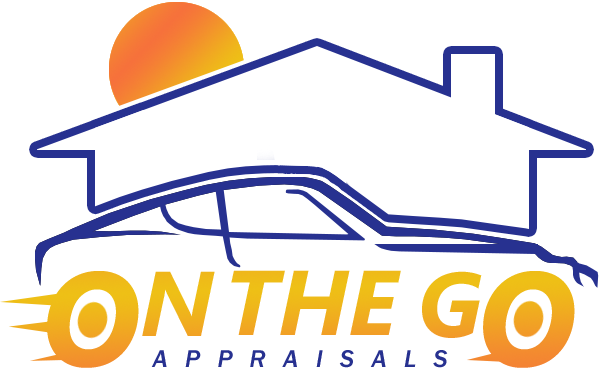

State Farm is the largest auto insurer in the United States, and naturally, many car owners have their cars hit by someone insured by State Farm, and they want to know how to claim diminished value from State Farm. In this post, we explain everything you need to know to make a successful DV claim with State Farm. Make sure to read to the very end, so you don’t miss anything important.
What is a diminished value claim?
Inherent Diminished Value is the loss in market value of a vehicle after it suffered a collision and was repaired. This loss occurs even if repairs were done properly. Diminished value is also known as the CARFAX stigma or the accident stigma because car buyers are demanding steep discounts for vehicles with accident history. The average diminished value amount is $6,000 but we’ve seen claims as high as $70,000.
Do I qualify for a diminished value claim?
There are three factors that will disqualify you from making a diminished value claim.
- If you were at fault for the accident, you cannot claim diminished value. The exception to this is if you live in the State of Georgia, where you can claim diminished value even if you were at fault.
- Your car was totaled. There is obviously no diminished value if the car is totaled because you just get one check for the pre-accident value of your car.
- Your car was under lease at the time of the accident. Only the legal owner of the car is entitled to a diminished value claim, and the legal owner in case of a lease is the leasing company, not you. But don’t confuse financing with leasing. If you financed your car, you do qualify for a diminished value claim.
When should I make the claim, and how long do I have to make the claim?

You can make a diminished value claim as soon as you have the repair estimate from the body shop. In all but one state, you have at least two years to make your claim. In some states it’s 5 or 6 years, and it’s even 10 years in Rhode Island! Your state’s Statute of Limitations for Property Damage determines exactly how long you have since the date of the accident. Please refer to the link in the description to see how long you have in your state. Many people think the accident should’ve happened yesterday in order for them to be able to make a claim – that couldn’t be further from the truth – don’t make that mistake!
Do I need a lawyer to handle my diminished value claim?
Unless you have a very high-end luxury or exotic vehicle that retails for over $120,000, it’s generally not worth it to retain an attorney. Not for you and not for the attorney. Very few attorneys will help you with a diminished value claim and the few who do, tend to take those with very high-end vehicles where the diminished value amounts can get into many tens of thousands of dollars.
How does State Farm feel about diminished value claims?
State Farm is intimately familiar with diminished value claims, perhaps even a bit more familiar than they would like. In 2001, they paid $150 million dollars to settle a diminished value class action lawsuit in Georgia.
How should I make the claim for best results?
Our experience shows that the best way to make a claim is to obtain an independent Diminished Value Appraisal and then send a Demand Letter to the at-fault insurance company.
What is a Demand Letter, and why should I use it?

The Demand Letter is a legal document that demands payment you believe you’re owed. In this case, diminished value. Why is sending a Demand Letter the best way to assert your claim? Because that’s the way lawyers do it and because it works the best. Often, drivers make the mistake of getting into phone negotiations with their adjuster. Bad move! The adjuster averages handling 100 claims a day. An average driver gets into an accident once in 18 years. Who do you think will have an unfair advantage in a fast-paced phone negotiation?
Additionally, sending a Demand Letter either by email or regular mail establishes a paper trail. A paper trail may come in handy if the adjuster is treating your claim unfairly. So skip the phone trap and do it like the lawyers do!
Tiger DV includes a Sample Demand Letter free of charge in every Appraisal Package.
What is a Diminished Value Appraisal, and why should I get one?
You can’t just demand any amount you want for diminished value. The amount must be properly proven. And the right way to prove the amount is to obtain a certified appraisal from an independent auto appraiser specializing in diminished value. Sure, you can use one of those “calculators” or formulas online, but you will get what you pay for because no one takes those seriously, and rightfully so. The preowned vehicle market valuation is too complex, dynamic and localized for diminished value to be accurately appraised by any sort of cookie-cutter calculator or formula.
A proper Diminished Value Appraisals must comply with the USPAP, which stands for Uniform Standards of Professional Appraisal Practice. USPAP is an appraisal standard adopted by US Congress in 1989 and is used for appraisal of all kinds of property, not just cars. If your diminished value amount is not backed by a certified, USPAP-compliant appraisal, you will have a very tough time with your claim, and it will likely get denied.
Most good appraisers offer free diminished value estimates. And at Tiger DV we offer a 100% money-back guarantee, removing all risk for you.

What if State Farm makes me a lowball offer?
That happens a lot. Despite the feel-good commercials, State Farm is not like your good neighbor and is certainly not your friend. Claim settlement is an adversarial negotiation and State Farm, like any insurance company, will attempt to pay you as little as possible while your goal is to get paid what you deserve. When facing a lowball offer, your options are to accept it or reject it and request a better offer.
What if State Farm denies my claim?
If State Farm denies your claim or doesn’t increase their offer to a level you are satisfied with, you still have options. You can ask for a supervisor with broader settlement authority, or you can complain to your state’s Insurance Commission or the Department of Insurance. If none of that helps, the last step is to force the issue by suing their Insured driver in Small Claims Court. You don’t need a lawyer in Small Claims, and it’s designed for everyday people like you to easily represent themselves. If you can follow what’s going on on “Judge Judy”, you can ace your Small Claims case.
What is the 17C Formula, and how is it biased against me?
The 17C Formula came about as the result of a diminished value class action lawsuit against… you guessed it! State Farm! As part of the settlement, State Farm lawyers have crafted a formula for payouts. Not surprisingly, it grossly under-appraises the diminished value amount. There are several fatal flaws in its construction, such as setting an arbitrary 10% cap and double-dipping on the mileage discount.
Of course, many insurance companies love to use this discredited formula because it pays pennies on the dollar. But you don’t have to agree to its use! Not even in Georgia, where that lawsuit originated. 17C was designed for use in that one specific case, and drivers are not obligated to agree to its use anywhere in the United States. Instead, get a professional USPAP-compliant appraisal to make sure you get the diminished value compensation you deserve.
What is Predatory Subrogation?
Sometimes, the limit of the liability policy of the at-fault driver is not enough to cover both the repairs and the diminished value. In this case, it’s very easy to fall victim to what we call predatory subrogation and receive nothing for your diminished value claim. Predatory subrogation when your own insurance company who covered your repairs tries to get compensation for the cost from the at-fault insurance company. If the limits of the other driver’s policy are low and your insurance company subrogates before you get a chance to make your diminished value claim – there may be nothing left for you!
But there is great news! A legal concept called the “made-whole doctrine” gives your claims priority over any subrogation. That means your insurance company must wait until your diminished value claim is settled before they can try to subrogate the cost of repairs. But you must notify both insurance companies in writing that you have a pending diminished value claim and that you request that any subrogation by halted until your claim is resolved. This little bit of knowledge can make the difference between you getting $0 and thousands of dollars for diminished value.
If you or your friends & family were a victim of an accident within the last couple of years (it doesn’t have to be yesterday!) and you’d like to know how much in diminished value you’re owed – just get a free diminished value estimate from Tiger DV.




